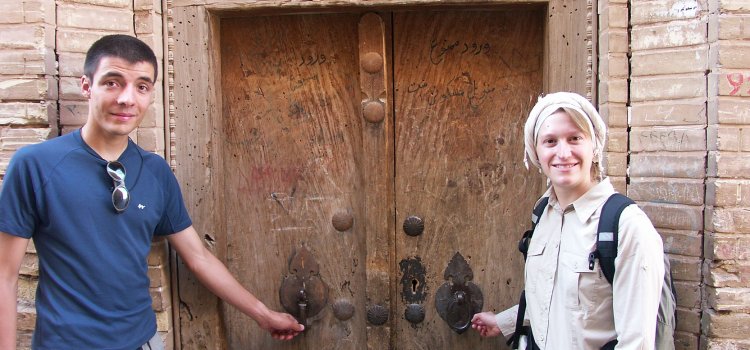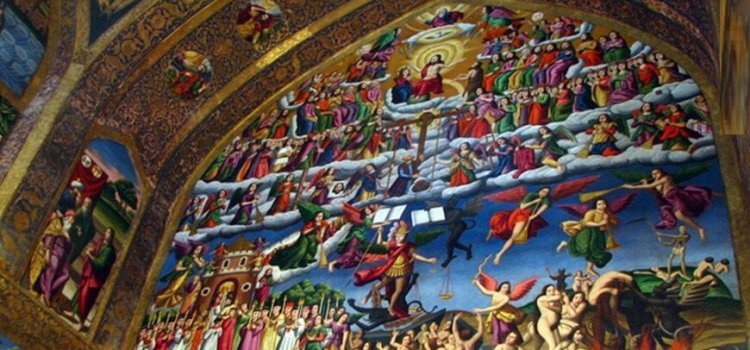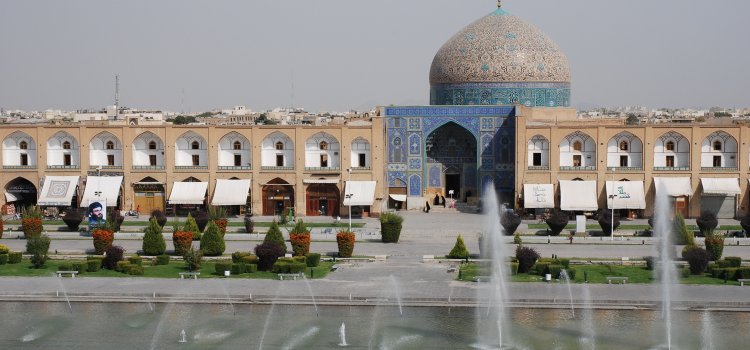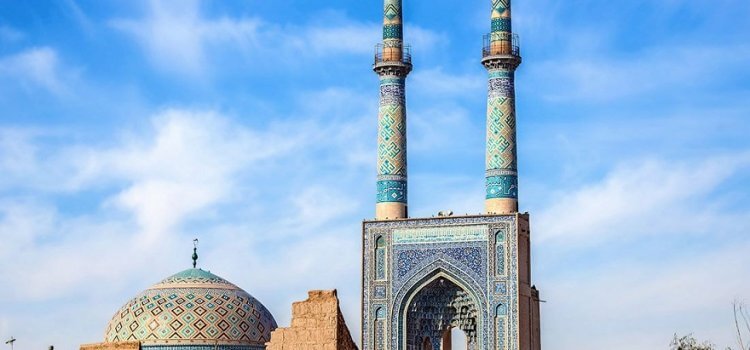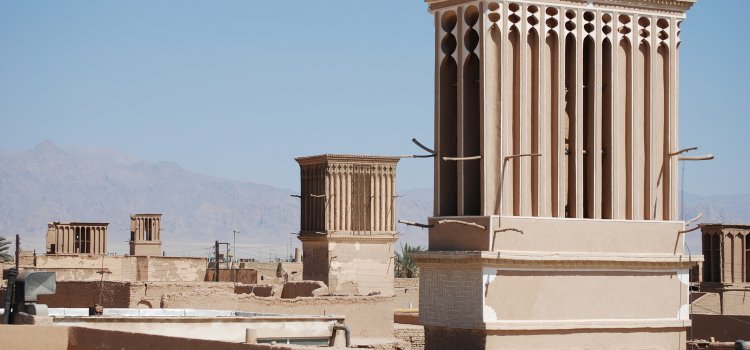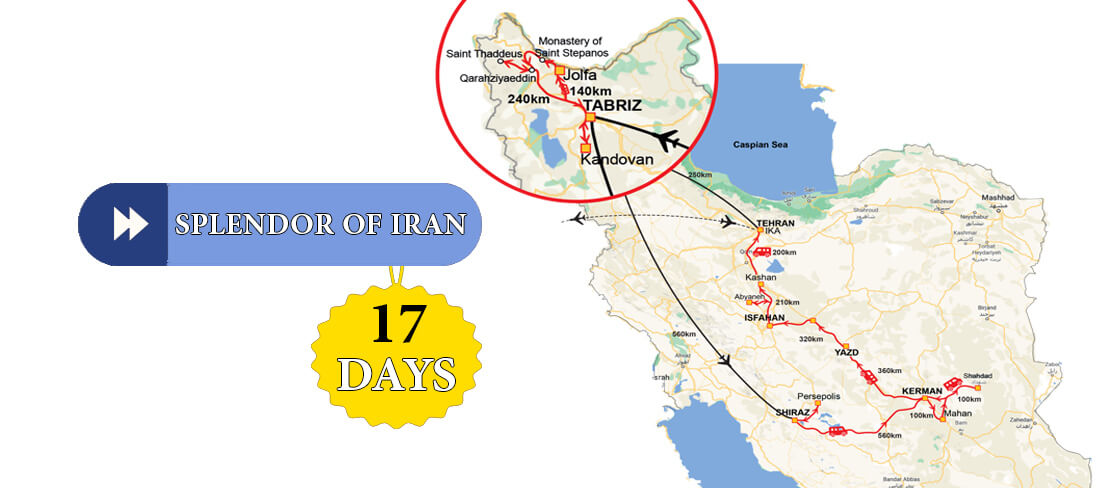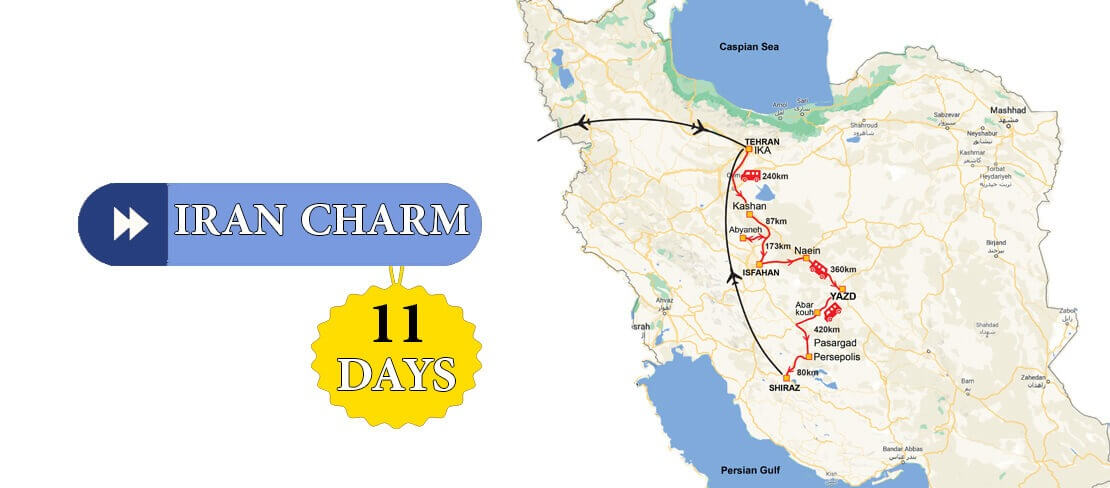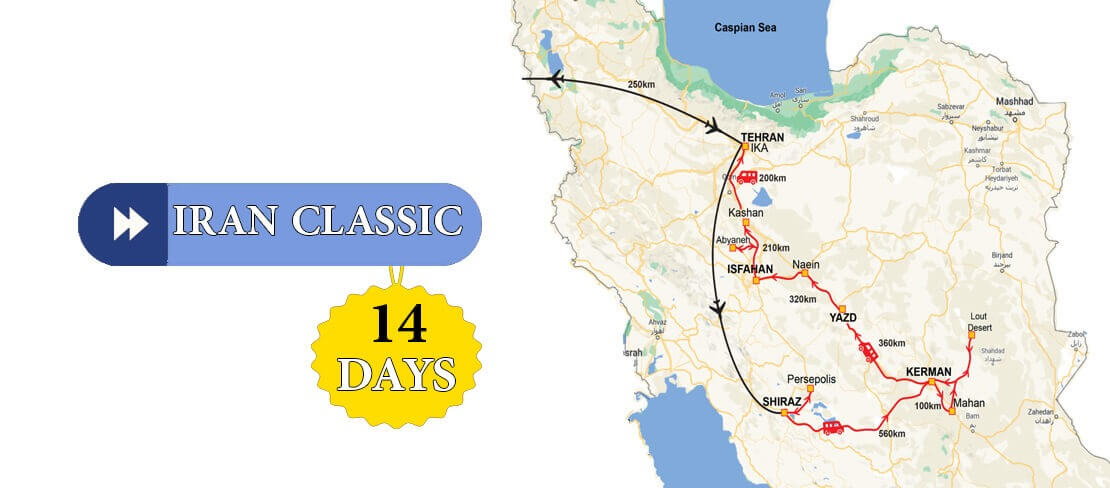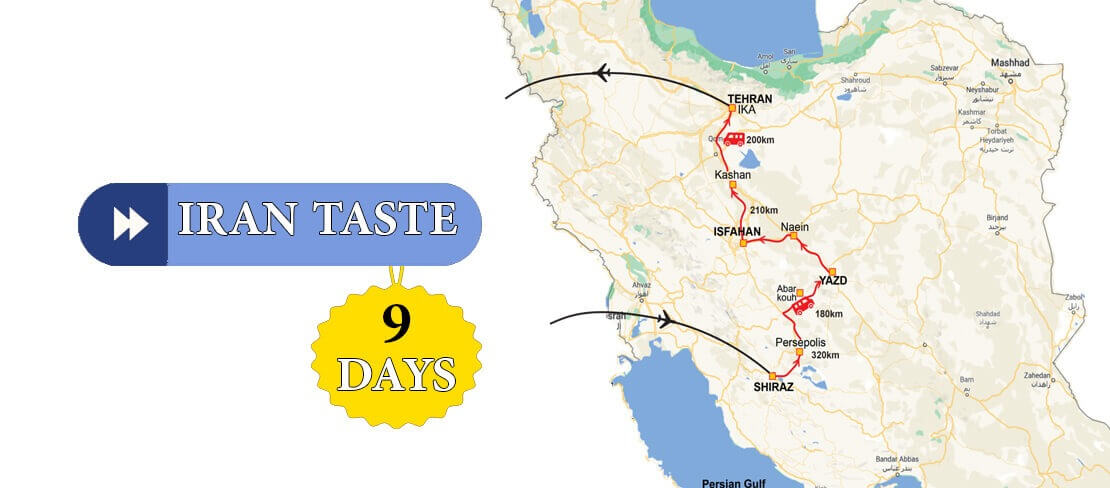“Who is knogckin at the door?”
Knockers are not only decorative accessories hung on heavy wooden doors, they have a special cultural connotation.
Women inside houses had to wear the hijab in the presence of people outside the close family members knocking on the door.
“Who is knocking at the door?”
Knockers are not only decorative accessories hung on heavy wooden doors, they have a special cultural connotation. Women inside houses had to wear the hijab in the presence of people outside the close family members knocking on the door. There are two hammers on each door leaf, each having a different shape and a different tone. The circular one has a lower sound, indicates that a woman is standing in front of the door. The heavier, larger handle has a higher sound and tells us it is a man visiting the household.
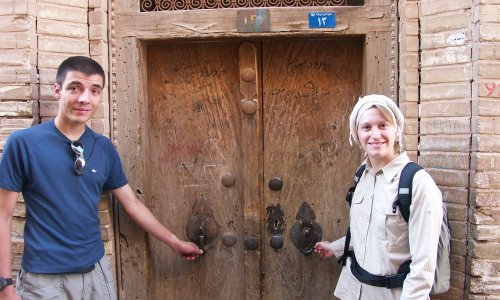
Vank Cathedral in Isfahan
Vank Cathedral,(congregational) the first and the main Armenian church in Isfahan was built in the middle of 17th century
and the differences of its plan to the classic ones has raised some legends and rumors, …
Vank Cathedral in Isfahan
Vank Cathedral,(congregational) the first and the main Armenian church in Isfahan was built in the middle of 17th century after the Armenian immigration forced by shah Abass who wanted to promote prosperity in his new capital, Isfahan.
Brick dome of church and some tiles working seem to be a derivation of Muslim mosques. The paintings are the combination of Byzantine style and Iranian miniature. This church is not in service any more and it is just used as a museum and for administrative matters. An ethnography museum near by shows the history of the Armenians since their arrival.
Sheikh Lotfolah Mosque
There are two mosques in Naghshe -Jahan square. The one with no minaret is sheikh lotfolah.
It was built in 17th century and the differences of its plan to the classic ones has raised some legends and rumors , …
Sheikh Lotfolah Mosque
There are two mosques in Naghshe -Jahan square. The one with no minaret is sheikh lotfolah. It was built in 17th century and the differences of its plan to the classic ones has raised some legends and rumors ,such as it was reserved to women of the king who came in through an underground path .
The entrance seems like a transition from world of materials to heavens.
When one reaches that single prayer hall, he/she finds out that there is nothing more beutiful to see .
One should spend hours to observe and meditate on tiles and mosaics to be able to appreciate the splendeur of decoration and the straits of calligraphy.
Light plays a special role on the patterns and does not let the eyes to match with habituel colors they perceive normally .
It really deserve to be named as one of the most beautiful mosques in the Islamic world.
Jameh Mosque of Yazd
The Jame Mosque or the Congregational Mosque is one of the oldest monuments of the Islamic era in Yazd.
An imposing entrance (the tallest of all mosques in Iran) topped by two minarets that dominate the old city.
Jameh Mosque of Yazd
The Jame Mosque or the Congregational Mosque is one of the oldest monuments of the Islamic era in Yazd. An imposing entrance (the tallest of all mosques in Iran) topped by two minarets that dominate the old city.
Much of the history of The Mosque dates back to Mongolian times in the 14th century. The monument has been restored several times. The last works were carried out between 1954 and 1986. The reputation of the mosque is due to its Persian blue tiles, its mosaics with various floral and geometric patterns, or its fine ornamentation in brick and terracotta.
The water is channeled through a qanat, accessed by a staircase to perform ablution before prayer.
Wind Tower
Badgir or wind tower is a kind of tower constructed on top of the roof of the houses in Yazd and other cities in the desert to capture wind flow and to lead it to the room under for ventilation.
Do not worry about hot wind because a cool water basin under the tower would add some moisture to it and make it cooler.
wind tower
wind tower or Badgir is a kind of tower constructed on top of the roof of the houses in Yazd and other cities in the desert to capture wind flow and to lead it to the room under for ventilation.
Do not worry about hot wind because a cool water basin under the tower would add some moisture to it and make it cooler.
How does it work when the wind stops? very ingenious, Some cool weather of the last night is enough to make an
airflow at the day when it begins to get hot in the rooms.
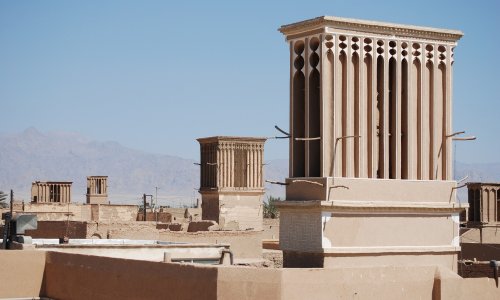
Fire Temple
Yazd Zoroastrian fire temple is a holy monument in which the 1500-year old fire is maintained.
The fire is one the 4 holly elements for the Zoroastrian and also the most important one because not only it’s not been contaminated…
Yazd Zoroastrian Fire Temple
The fire temple of Yazd, also known as Ᾱtash-kadeh Yazd, is one of the holiest places in Iran where followers of the ancient religion of Persia, Zoroastrianism, gather to perform their religious rituals. Although the fire temple itself was built in the 20th century, it holds in its heart one of the most sacred, highly respected types of fire in Zoroastrianism, Ᾱtash Bahram (Raham) or the victorious fire. Zoroastrians, and also historians, believe that the holy Ᾱtash Bahram in the fire temple of Yazd dates back to 470 AD, burning and giving light to the world for around 1500 years.
However, apart from its religious prominence, the Zoroastrian fire temple of Yazd is one of the major tourist attractions in this city. Each year, a large number of eager tourists come to the beautiful Ᾱtash-kadeh of Yazd to visit this sacred place and learn more about Zoroastianism, the first monotheistic religion of the world.
So, if you are going to visit this unique fire temple in the city of Yazd, we strongly suggest that you read the following article to learn whatever you need know before attending this holy place.
A Short History of the Fire Temple of Yazd
During the rule of Achaemenids (550-330 BCE) and Sasanians (224-642CE), Zoroastrianism was the estate religion of Iran. However, after the Arab conquest of Persia in the 7th century AC, Iranians gradually gave up their old religion and converted to Islam. In the 10th century, a large group of Iranian Zoroastrians fled to India and became known as Parsis. Nevertheless, a minority of Zoroastrians remained in Iran, keeping their religion alive in its homeland.
As a minority, Zoroastrians suffered from widespread persecution for long, long years. However, when Reza Shah Pahlavi came to throne, he gave his assent for the construction of an Atash-Kadeh (Fire Temple) in Yazd. Therefore, a group of Iranian Zoroastrians came together to build the fire temple of Yazd city.
As the story goes, Amānat brothers, who were going to keep alive the memory of their father, Ardeshir Mehraban Rostam, dedicated a piece of land as large as 6,881 square meters for the construction of Yazd Fire Temple. Nevertheless, they were short of capital and had to raise funds to build the holy fire temple.
In his memoire, Jamshid Amānat tells the story of his hardships in traveling to India, four times by steam ships and one time by camels and also on foot, to persuade the Indian Parsi Association to pay for the construction of Yazd Fire Temple. At last, Hama Baee agreed to provide the necessary financial resources for the construction of the fire temple.
So, Parsi engineers designed the fire temple and Arbāb Jamshid Amānat supervised its construction and, in this way, Bahram Fire Temple finally came into being in the year 1934.
A Word on the Holy Fire Burning in the Fire Temple of Yazd
Well, let us tell you some interesting facts about the different types of fire lightening the world of Zoroastrianism. Actually, there were three types of fire used in the Zoroastrian world of Persia:
- Court fire burning in houses,
- Aderan (Azaran, Darmehr) fire which was superior to the court fire, lightening larger areas such as cities,
- Fire and Raham (Bahram), or the victorious fire, the most general and prestigious fire types simmering in Zoroastrian fire temples. Currently, you can visit only two samples of this type of in Iran, one in Yazd and the other in Kerman. As Zoroastrians believe, the Bahram Fire itself includes 16 different types of fire and thunderbolt lightening. Each one of these 16 different types has a name which are: Dyer, King or Governor, Potter, Brick, Dervish, Goldsmith, Mint, Armorer, Baker, Distiller, the Army Commander, Shepherd, Religious Leader, Sky Lightning, and, finally, Dead Burner.
As the story goes, the Bahram fire burning in Atashkade Yazd was first kept in one of the greatest Sassanian fire temples, the well-known Pars Kariyan (Azar Farnbagh) fire temple. This fire temple was located in Larestan, a city about 350 km to the South-east of Shiraz. Then, it was taken to Aqda, a city in Yazd province. The victorious fire burnt in Aqda for about 700 years. After that, it was kept alight for 300 years in Ardakan, another city in Yazd province. Finally, the victorious fire landed in the city of Yazd, and with the construction of the Fire Temple of Yazd, it has rested there up to now.
The Architecture and Decorations of the Yazd Fire Temple
The Main Yard: A Symbolic Space of Zoroastrian Beliefs
As you pass through the gates of Yazd Fire Temple, you will enter a large yard, surrounded by ever green cypresses and planes. In the middle of the yard, there is a circular pool filled with water, reflecting back the whole monument.
Behind the pool, there is located the main building of the fire temple of Yazd. Built on a 21-meter-high platform, you should ascend eight steps to enter a small porch which leads into the holly building. Four high-rising columns stand upright in front of the porch, decorating the façade of the main building.
The stone capitals of the columns and the flowers embellishing the walls of the building are delicate works of art by Isfahani stonemasons. These works of art were carved by artists in Isfahan and then were brought to Yazd.
Above the entrance, there is the figure of Faravahar, made by expert Yazdi artists.
The Main Hall
In the porch, there are two wooden doors. Take the one on your right to enter the main hall. As you step into the main hall, you will find a space covered with white marbles, decorated mostly with quotes from Avesta and portraits of the prophet of ancient Persia, Zoroaster.
In the middle of the main hall, you will encounter a glass window through which you will be able to see the holy Atash Bahram (Bahram Fire).
The scared Atash Bahram is kept burning in a bronze container, located on a platform a few meters above the ground level. The bronze container is located itself in a large room, surrounded by other smaller rooms which are used for praying and other religious rutuals.
A person, called “Hirbod”, is responsible for keeping the fire alive. He preserves the fire by adding a piece of dry wood, usually almond and apricot which take longer to be burnt out, several times a day. The remaining ash is of no importance, so it is emptied out of the container whenever necessary.
Visitors can see the fire only through the glass as no human breath should contaminate the pure fire. It is interesting for all tourists that this fire has been burning for this long. They can even smell some of the fire while looking through the glass.
Varjavand Hall
It was in 1939 that Mr. Jamshid Amanat built a hall and a water reservoir in the Yazd Fire Temple complex in memory of his wife. The hall building was destroyed and unusable in 2002 due to old age. Engineer Parviz Varjavand renovated this hall and completed the renovation in 2008, keeping its old style. He did this in memory of his parents, Dr. Fereydoun Varjavand and Dolat Rostami, and the name of Varjavand remained on the hall.
Now, Varjavand Hall has become an exhibition where you can learn more about Zoroastrians, traditions, and religious customs. There are different mannequins, photos and there. In one corner there are a bride and a groom and you read about them, and in another corner, you get information about the Nowruz and the ceremony of the followers of this religion. You can learn about the Zoroastrian prayer, the religious customs, and the ritual of dressing in the same hall.
Water Reservoir of Yazd Fire Temple
Jamshid Amanat was the one who built a water reservoir in the Zoroastrian fire temple. Today, you can visit this reservoir be on the ground floor of Varjavand Hall. On the ground floor, before entering the reservoir, you will encounter an exhibition space where you can see pictures taken by various photographers on subjects related to Zoroastrians. From Nowruz to prayers and religious customs, you can see and learn about them in these photos.
In a corner of the exhibition hall, you have to go down the stairs to enter the water reservoir. The end of the staircase was blocked in the past. And people used a faucet installed at the bottom of the water tank to get the water they needed. Now this faucet and the wall are not there anymore, so tourists can enter the water reservoir room and pay a visit. It’s the water of the qanat that flows through the upper valve of the reservoir so that people can access it.

